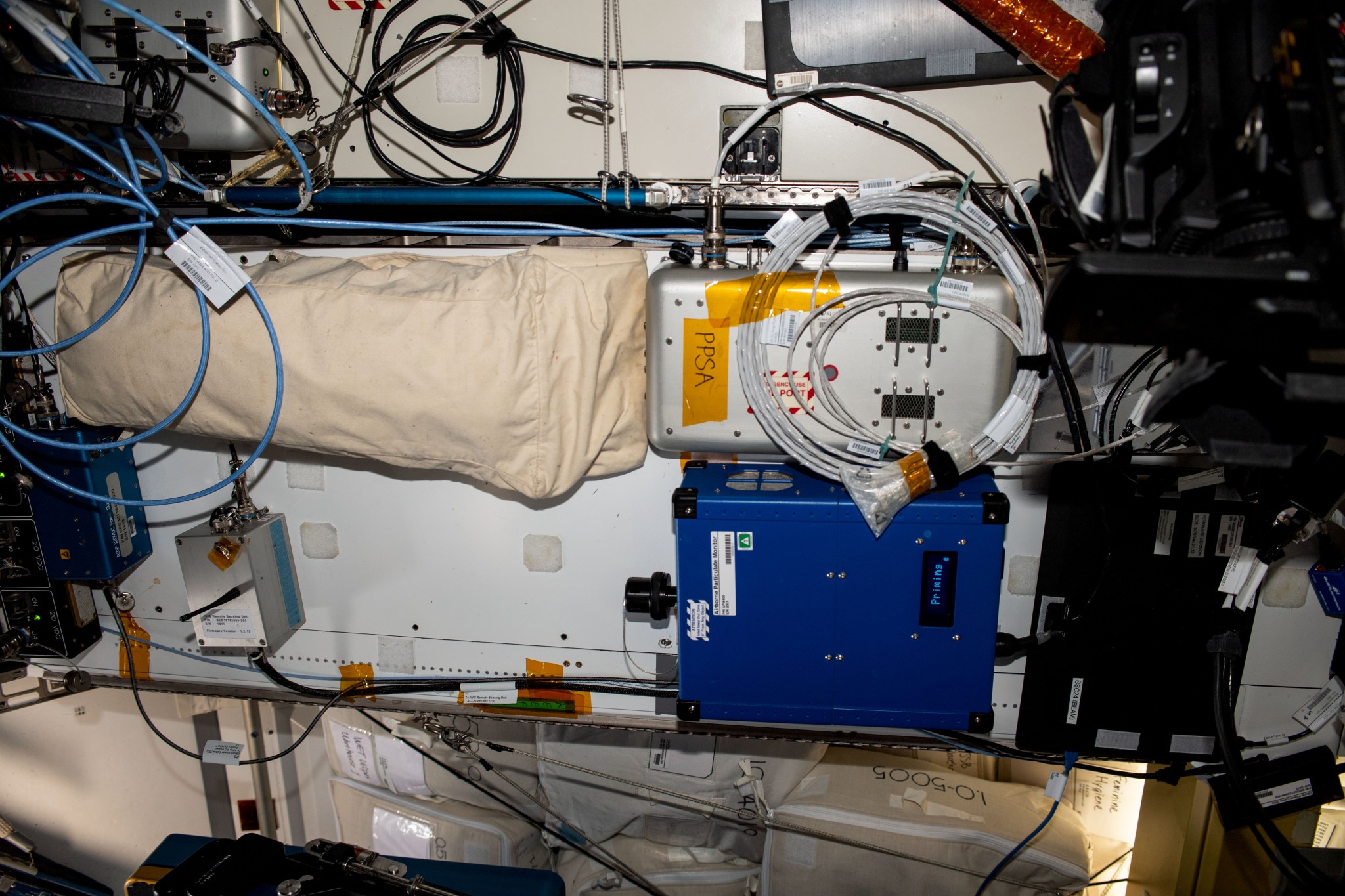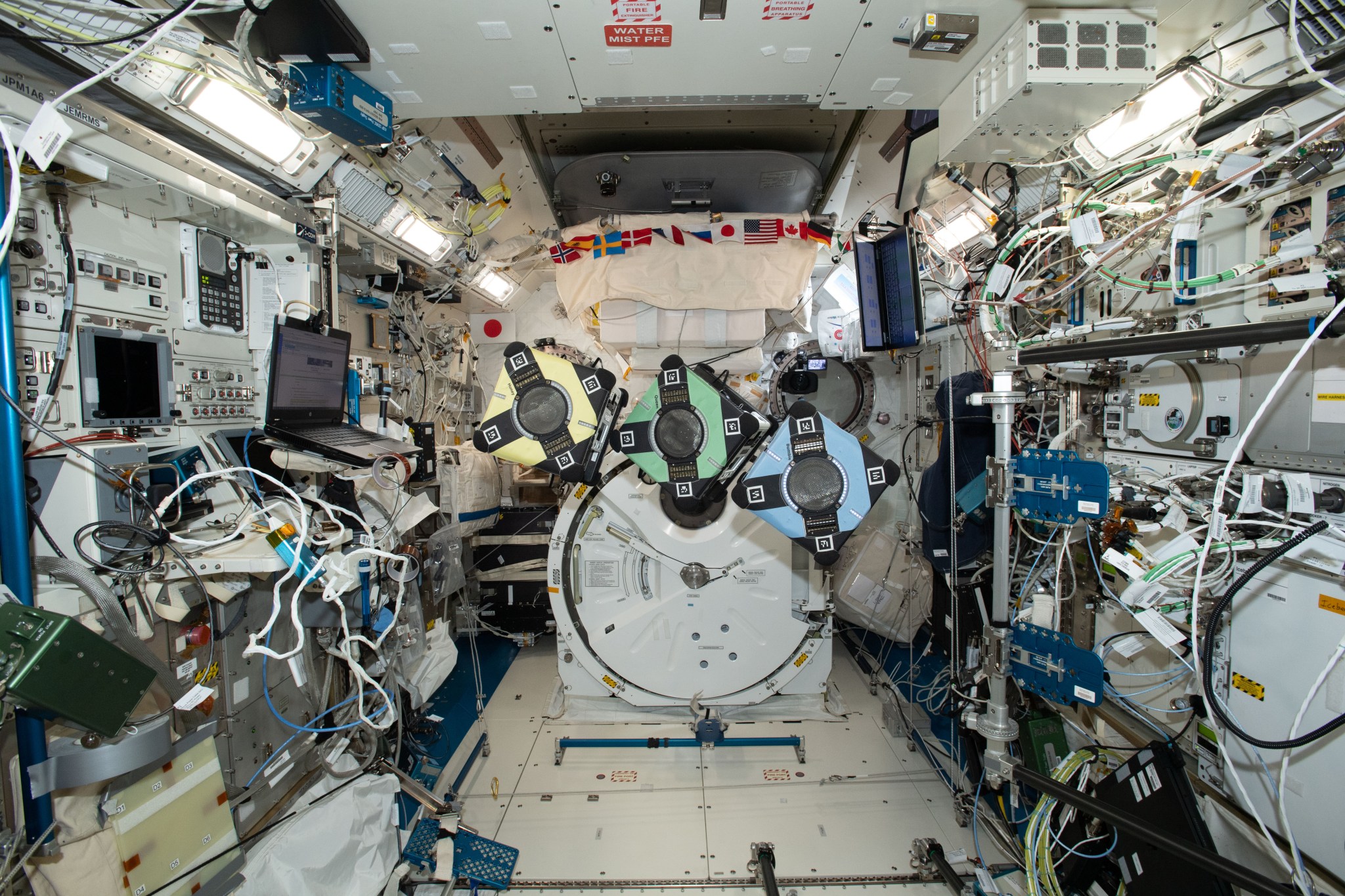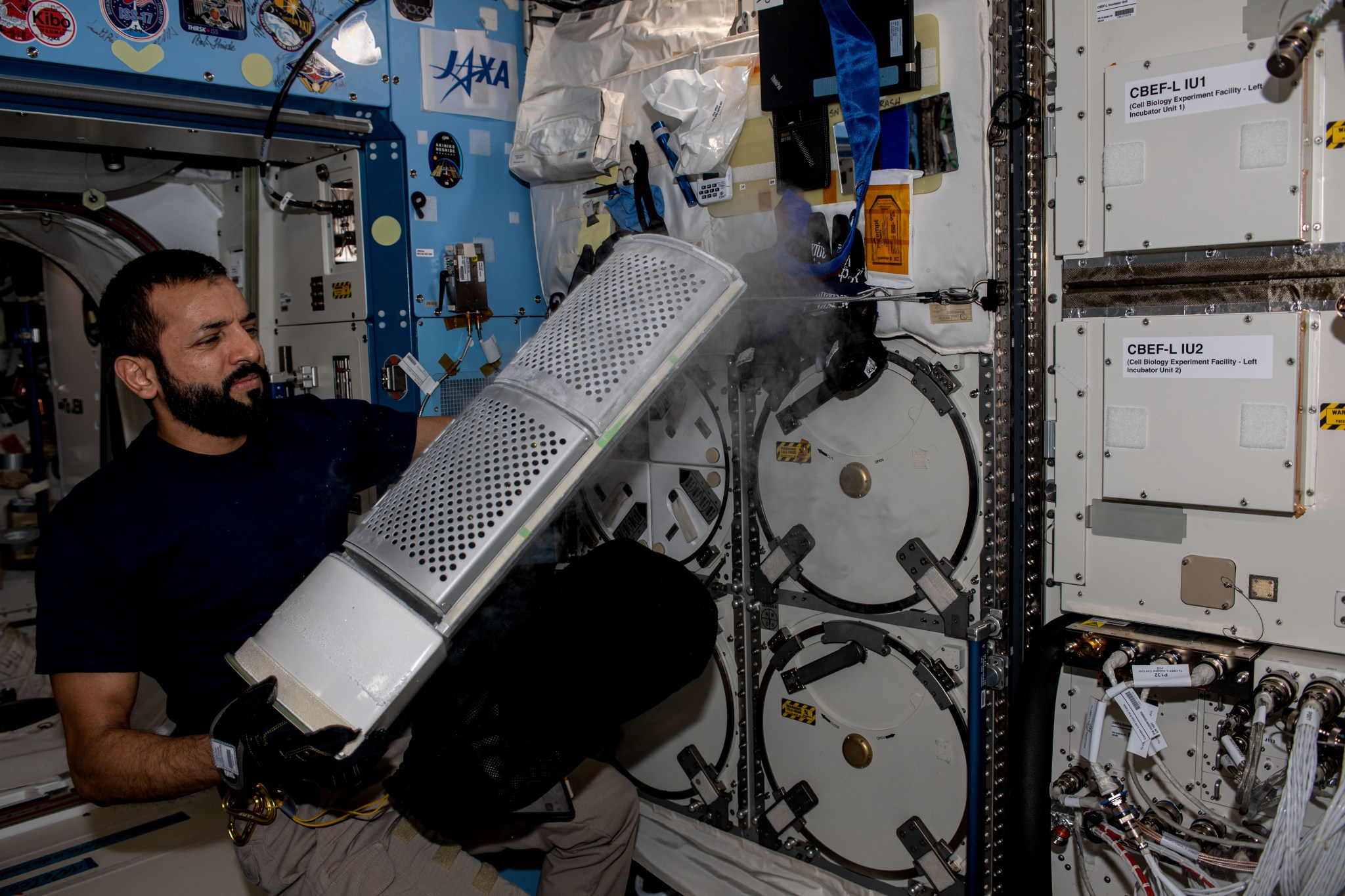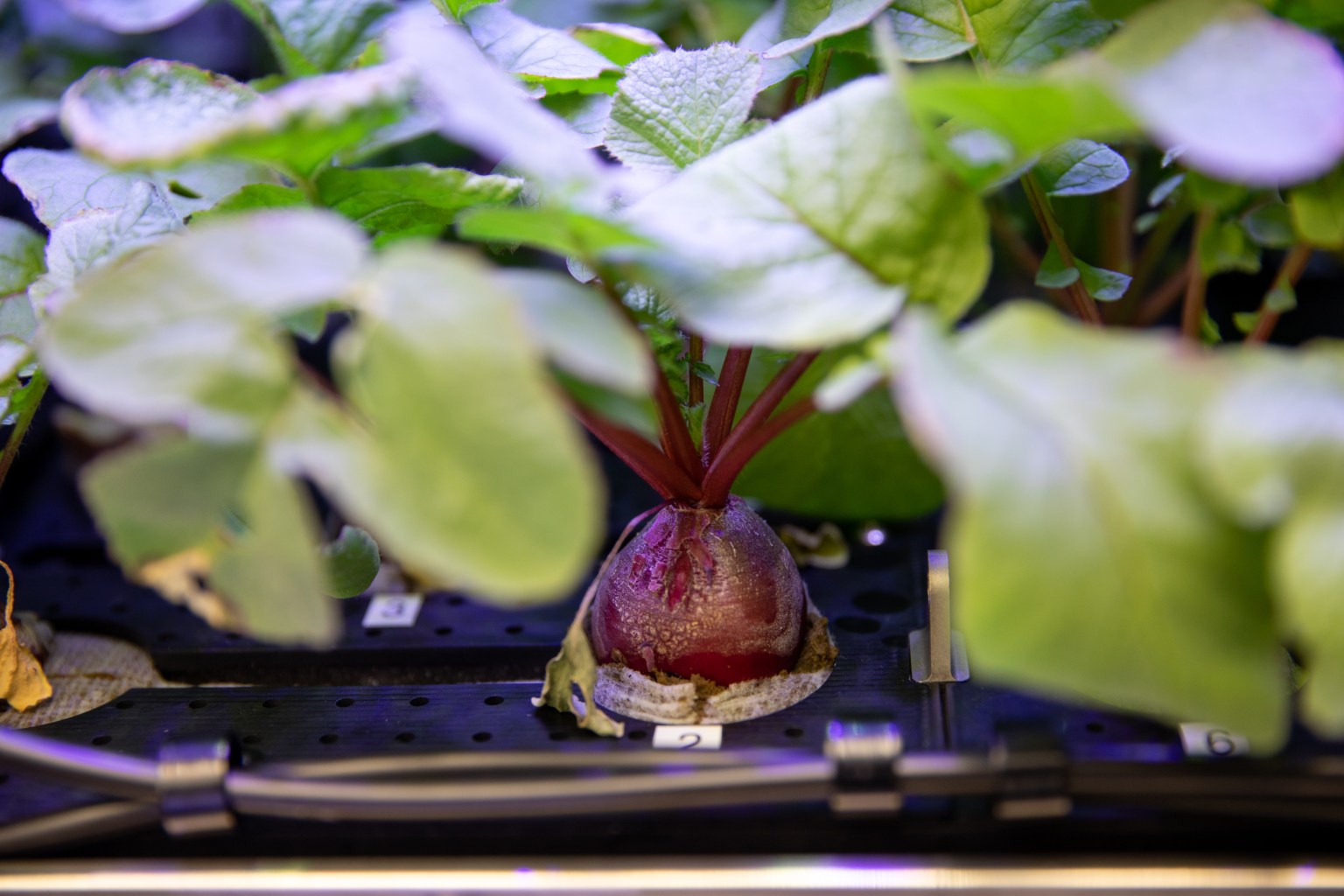Crew members aboard the International Space Station conducted scientific investigations during the week of June 5 that included measuring particles in the station’s air, using code written by students to control free-flying robots, and growing protein crystals that could be used to develop new pharmaceuticals.
Here are details on some of the microgravity investigations currently taking place aboard the orbiting lab:
Breathing Easier
Crew members aboard the space station need clean air to breathe. Requirements limit the allowable concentrations of particulate matter in the cabin air, but no measurement exists to verify whether these requirements are met. Airborne Particulate Monitor demonstrates an instrument to measure and quantify the concentration of both small and large particles in the station’s air. The data could shed light on the sources of particles and determine the efficiency of current filtration systems, supporting better design for environmental monitoring of future space vehicles and habitats. Such monitoring becomes more important as mission duration increases. The technology has applications in environmental monitoring and air pollution studies on Earth as well. During the week, crew members transferred data and stowed the monitor.
Code to Control Astrobees
Students compete to write software that controls one of the space station’s Astrobee free-flying robots for Zero Robotics, sponsored by National Laboratory Education. The experience helps inspire young people to study computer science, engineering, and mathematics and pursue related careers. The program also promotes teamwork, computer literacy, and awareness of the career opportunities created by the space program. By advancing understanding of artificial intelligence, systems engineering, and human and robot collaboration, the program has spinoff benefits for Earth. Crew members performed multiple tests to assess hand gesture-recognition software during the week.
Better Crystals, Better Drugs
An investigation from JAXA (Japan Aerospace Exploration Agency), Moderate Temp PCG grows high quality protein crystals in microgravity to help scientists determine their precise protein structures. These structures are used to develop pharmaceutical drugs and to explore specific functions in the body. Microgravity enables growth of higher quality crystals than is possible on the ground. Crew members placed samples into the space station’s freezer during the week to initiate experiment runs.
Other Investigations Involving the Crew:
- Ring Sheared Drop-IBP, sponsored by the ISS National Lab, studies high-concentration protein solutions and tests computer models for predicting their behavior. Results could enable production of next-generation medicines and improve in-space manufacturing and 3D printing.
- Lumina, an ESA (European Space Agency) investigation, monitors the radiation dose inside the space station. The dosimeter has optical fibers that darken when exposed to radiation, technology that could provide reliable, real-time measurements in complex radiation environments such as those on future space exploration missions.
- PK-4, a scientific collaboration between ESA and Roscosmos, studies complex plasma crystals. Understanding how these form in microgravity could lead to new research methods, improved spacecraft designs, and enhanced use of plasmas in industry on Earth.
- Space Health, an investigation from CSA, uses the wearable Bio-Monitor system integrated with the automated Artemis platform to assess the effect of space travel on heart health. Automated monitoring systems are needed as future missions travel farther from medical support.
- Immunity Assay, an investigation from ESA, monitors how spaceflight affects immune function using a newly developed process that can be performed during flight. Results could support development of countermeasures for immunological issues during long-duration spaceflight.
John Love, ISS Research Planning Integration Scientist
Expedition 69


































